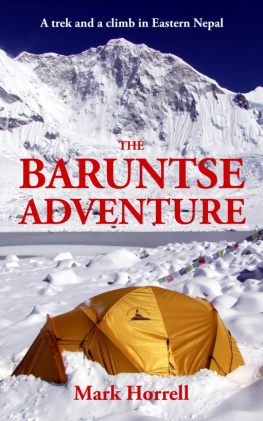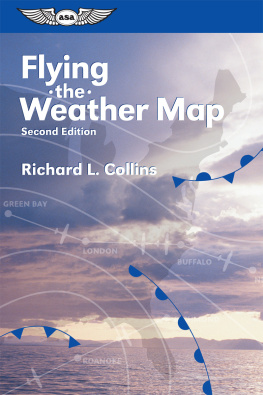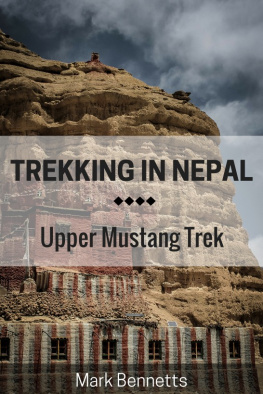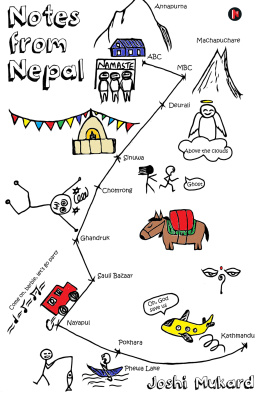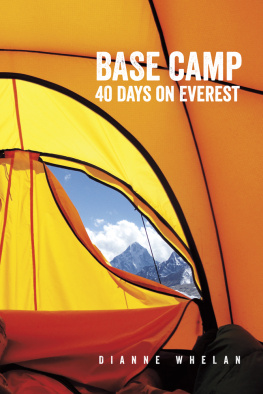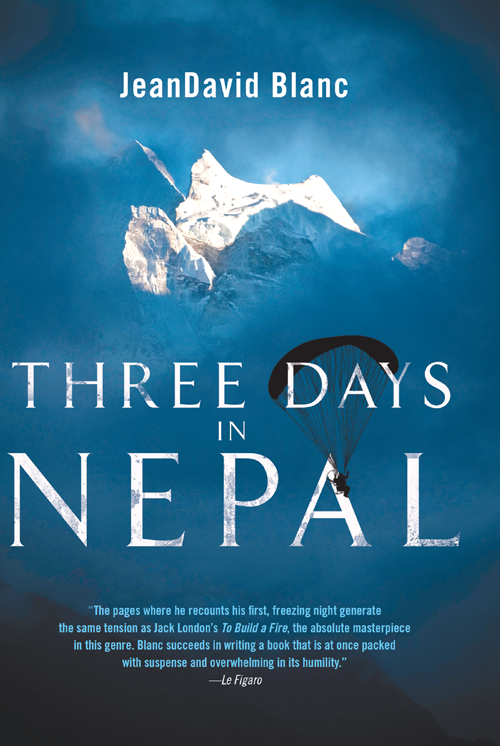N othing compares with the feeling of flight. I dont mean sitting in an airplane, but flying on your own, by your own powerfeeling flight to your very core, piloting with your muscles and reflexes, your body airborne like a bird.
When I was about ten years old, I had a dream. All I had to do was to push with my legs, hold out my arms, and I would take off like Superman. I would soar over houses, skim over fields and roads and circle through the air like a bird. When I woke up, I felt like I had really flown.
As soon as I could afford to, I took flying lessons. I joined a flying club. I was taught the theory of piloting and how to take off in little airplanes. But I never rediscovered the feeling of my childhood dream. Planes are practical for getting from point A to point B, from one airport to another, but apart from takeoff and landing, you dont really feel like youre flying.
Much later, I discovered powered paragliding. It involves wearing a strange machine with a motor and a propeller strapped to your back that turns your body into a plane. A giant wing that, when given some speed, lifts you into the air. An entire powered paraglider, or PPG, can be folded up into two bags that fit in the trunk of a car or can be checked as luggage.
The PPG is like a costume that turns you into a flying animal. You can fly low like a dragonfly or as high as an eagle, as slowly as a butterfly or as swiftly as a falcon. The very best pilots can touch down on a moving bus or land on an egg in the middle of a field.
Powered paragliding is not a very popular sport. It requires dedication, not to mention time and patience. You have to learn to watch the weather and read the clouds, know your motor inside and out, manipulate the wing and monitor the air that keeps it afloat. Only once youve mastered these skills does the sport yield its reward: the joy of flying wherever, whenever and however you want. The PPG is the most reliable aircraft in the worldas long as you remain humble.
Powered paragliding is also a great way to meet people from different walks of lifeit attracts people who are outgoing and adventurous and often both loners and team players at the same time. Its a mindset: the act of flying is in itself an individual act, but most people fly in groups. Ive met a number of lone wolves, of course, but most pilots would rather fly in the company of others, like a flock of birds.
Thats how I came to meet Franois, Efi, Adam and Laurent, pilots who have become my friends and with whom I often go on powered paragliding trips. A powered paragliding trip involves setting off to discover a new country with our machines in tow. Once we arrive, we meet other pilots, both local and foreign. The locals (who often organize the tours) serve as guides, showing us their country from the air. We usually go on two to three flights per day, very early in the morning or in the late afternoon and early evening, so that there is as little wind as possible.
I think it was Efi who first spoke to me about a January tour being organized in Nepal. When I told Franois about it, we decided to go together.
The tour had been arranged by a couple of Russian expats, flying enthusiasts who had lived in Pokhara for a long time. Pokhara is a town situated at the foot of the Himalayas and is a world-renowned base camp for trekkers and hippies alike. Natasha, her husband and their son, Stephan, had started a flying club there, giving tourists an opportunity to discover the exceptional Himalayan beauty of Mount Everest and Annapurna from the air.
Winter was the best time of year for flying, thanks to low winds and the lift provided by cold air.
The opportunity to discover Nepal in such ideal conditions was a dream come true.
A tailwind is pushing me toward my destination. The sun is in front of me, radiant. I have music in my ears, full blast. I often fly listening to soundtracks from films. Mainly action movies. In flight, this music takes on a whole other dimension. There is a layer of clouds beneath me. The other pilots have stayed below it and are fighting a cross-wind, but Im moving fast. This is the first time that Ive flown above the clouds, like a commercial jet. The clouds gradually thicken below me until I cant see the ground at all. I shouldnt have let this happen: If my motor gives out, I wont be able to locate a place to land. I am using my GPS to navigate.
It had been eight days already since a group of pilots from all around the world had come together to take part in this power paragliding trip. The Russian team, as we called them, was made up of six people: a couple from Siberia (although the wife didnt fly; she was just along for the ride) and four other pilots, including Viktor, a European champion. Most of the time, they kept to themselves. They were all nice enough, but had already created their own little group, which spoke poor English. And our Russian was non-existent. Laurent, a three-time PPG world champion, had come from Canada. There were two pilots from Belgium, one especially funny guy from Brazil, Efi and Adam from Israel, and Franois and me from France. We had just spent the week flying over Nepal from one region to another, taking to the sky several times a day. The organizers of the Nepal PPG Trek had done an excellent job. Each flight was different from the one before and allowed us to discover the country from a new perspective.
I had lost visual contact with Franois, but the Brazilian pilot had followed me. I could see the Russian team, who had taken off ahead of me, in the distance. Thanks to the tailwind, I was quickly catching up to them. Having reached the target destination on my GPS, I began my descent through the clouds. I couldnt see anything, but I knew I was above our point of arrival. To spice things up a bit, I cut off the motor. The sail, freed from the motors propulsion, transformed into a paraglider. I turned off the music.
Descending through the clouds in near silence, the wind whistling through the lines of my sail, felt incredible. Just a few hundred metres below, part of the team was already on the ground. I flew toward them and touched down like a feather. What a thrill! My first instrument flight!
That evening we arrived in Pokhara, where we planned to spend the last two days of the trip. A PPG tournament involving various flying contests had been organized for the following day: games like catching a ball with your feet and throwing it into a ring of hay bales or slaloming figure eights around inflatable pylons. Games for birds, in a way.
Pokhara is a lively place at night, though we rarely took advantage of it. To fly early in the morning, we usually went to bed at a reasonable time. That night, however, we wanted to enjoy the towns great ambience. The crowd was a mix of trekkers leaving on or coming back from expeditions, free-spirited hippies and Western meditation enthusiasts. One bar had live music, and some of us who were musicians found ourselves joining in with the band, playing jazz, blues and rock and roll. The wife of the Siberian pilot, seemingly shy, turned out to be a real rock star on stage, playing the drums with an energy youd never have suspected her capable of.





